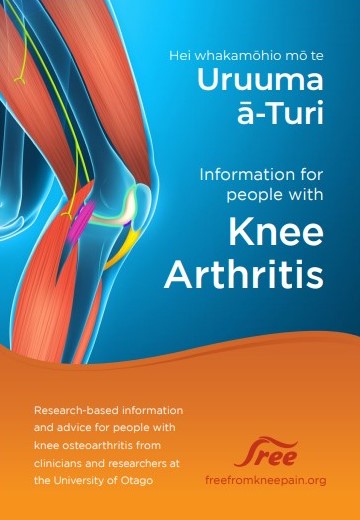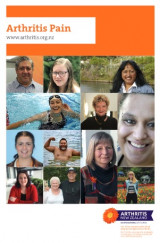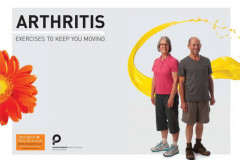Knee arthritis
Key points about knee arthritis
- Knee arthritis causes pain, swelling and stiffness in the knee joint.
- There are 3 main types of arthritis – osteoarthritis is the most common type.
- Gout is the second most common in Aotearoa New Zealand, mainly affecting Māori and Pacific Peoples.
- Rheumatoid arthritis happens when your immune system mistakenly targets your own body.
- Find out more about the different types and how knee arthritis can be managed.
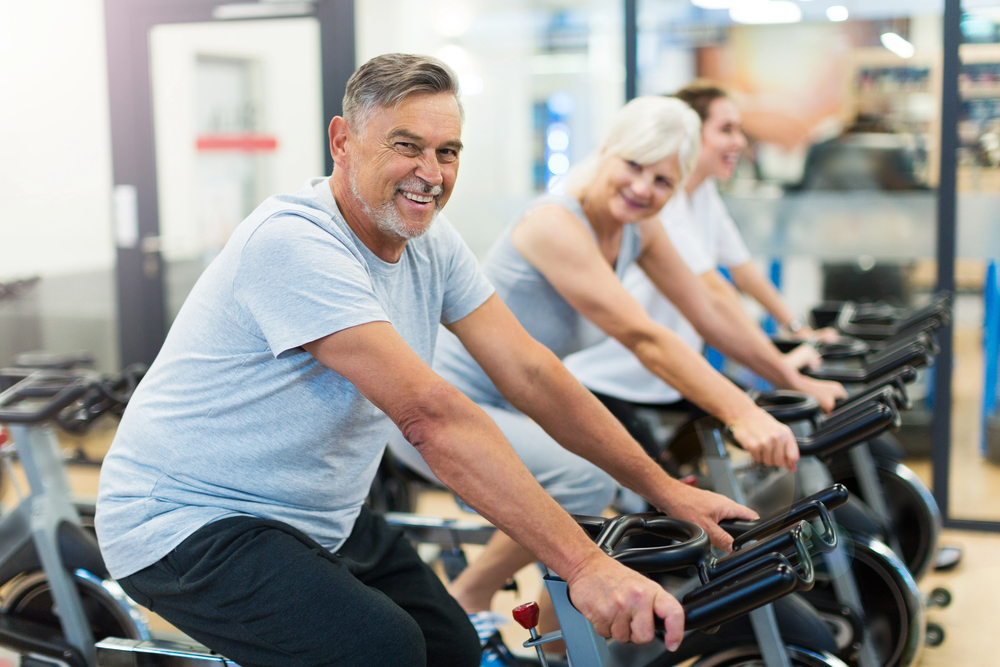
There are 3 common types of arthritis in the knee.
Osteoarthritis
Osteoarthritis is the most common type of knee arthritis. It causes pain and stiffness in the joint. Osteoarthritis is caused by the breakdown of cartilage in the knee joint from wear and tear. When cartilage is damaged, the joint can no longer function well and eventually the bone ends may rub together. This causes pain and stiffness. Read more about osteoarthritis.
Gout
Gout is the second most common form of arthritis in Aotearoa New Zealand and it mainly affects Māori and Pacific Peoples. Sharp crystals made of uric acid form in the joint causing severe pain. It commonly affects the big toe first but, if not treated, can spread to the knees and other joints. Read more about gout.
Rheumatoid arthritis
Rheumatoid arthritis occurs when your immune system mistakenly targets your own body. It particularly affects the lining of the joints between your bones and causes symptoms such as swelling, pain and stiffness. Rheumatoid arthritis will usually affect other joints as well as your knee, and tends to start in the smaller joints in your hands or feet. Read more about rheumatoid arthritis.
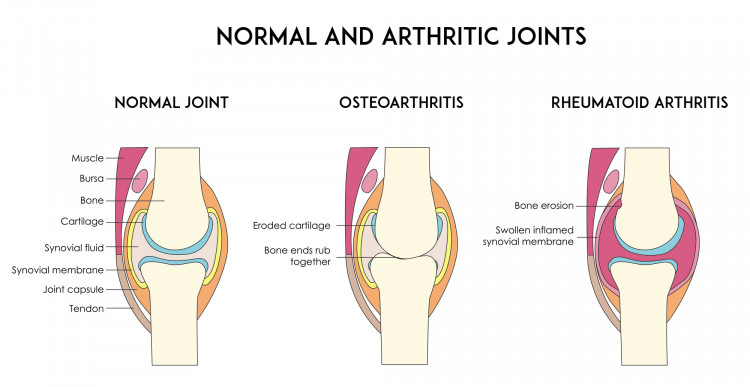
Image credit: Depositphotos
Knee osteoarthritis is more likely if you:
- are female
- are overweight
- have had previous knee injuries.
Knee rheumatoid arthritis is more likely if you:
- are 25 to 50 years of age
- are female
- are a smoker
- have genetic factors – although it's not directly inherited, your risk is higher if you have a close relative with rheumatoid arthritis.
Gout arthritis of the knee is more likely if you:
- are Māori or Pacific Peoples as Māori and Pacific Peoples have a gene which makes it difficult for their body to get rid of uric acid
- are overweight
- take diuretics (water pills to help your body get rid of extra sodium and water)
- have a family history of gout
- have other health conditions such as kidney problems, diabetes or high blood pressure.
Your healthcare provider will talk to you about your symptoms and will do a physical examination of your knee.
Before your appointment, take note of what things make your knee better or worse and when you notice the pain. Also, try to find out if anyone else in your family has experienced arthritis.
To assist with the diagnosis, you doctor may order additional testing, including:
- X-rays – which can show bone and cartilage damage as well as the presence of bone spurs
- blood tests – which can detect rheumatoid arthritis.
Knee arthritis can't be completely cured, but there are many ways you can relieve your symptoms and keep active and well.
Of the following strategies for managing knee arthritis, exercise and weight loss (if you're overweight) are seen as particularly important.
Here are some things that may help you manage your knee arthritis.
Exercise – stay active
- Taking part in an exercise programme which includes a mix of stretching, strengthening and cardiovascular exercises has a positive effect on pain and can improve movement. It can also delay the need for surgery.
- Walking, cycling and water-based exercises are suitable types of cardiovascular exercise for most people with knee arthritis.
- Regular exercise keeps your muscles strong and your joints flexible. It's also important for balance.
- A physiotherapist can guide you with how to get started and can help you develop an exercise programme that interests you.
Healthy weight
- If you're overweight, weight loss reduces the stress on your joints.
- Losing even a small amount of weight, if needed, can greatly reduce knee pain.
Self-management support
- Your healthcare provider can help you develop a self-management plan.
- This will provide you with practical advice on how to increase your skills and confidence in managing your symptoms.
- Read more about self-management and self-management support and care planning and care plans.
Physiotherapy and occupational therapy
- If you're having trouble with daily activities, physiotherapy or occupational therapy can help.
- Physiotherapists can show you ways to strengthen your muscles and improve flexibility.
- Occupational therapists teach you things such as how to pace your activities through the day. Spreading physically hard jobs (such as housework, mowing the lawn) throughout the day, rather than trying to do them all at once. For example, vacuuming the house can be done in short bursts rather than all at one time.
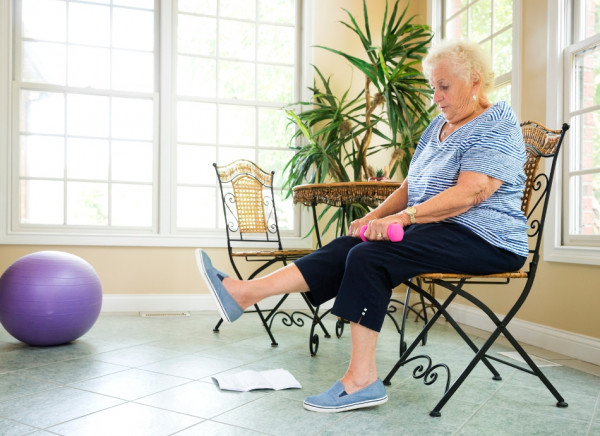
Image credit: Canva
Medicines for pain relief
- Pain relief medicines are often recommended by your doctor or pharmacist to reduce pain and stiffness. However, they don't treat arthritis itself. All medicines should be used at appropriate doses and for the shortest duration possible.
- Initially, possible types of pain relief medicines include:
- paracetamol
- non-steroidal anti-inflammatory creams which contain anti-inflammatories such as diclofenac and ibuprofen
- creams and gels containing capsaicin (Zostrix) which acts as a counterirritant.
- Other possible types of pain relief include:
- non-steroidal anti-inflammatories (NSAIDs) which can be taken as pills and may be more effective for pain relief than gels or paracetamol, but have more side effects
- combined pain relief medicines – paracetamol with a codeine-like medicine.
- If the medicines described above are not controlling your pain well, your healthcare provider may prescribe stronger pain relief. The pain relief prescribed for you will depend on the type of arthritis you have. Read more about medicines for rheumatoid arthritis and treatment for osteoarthritis.
- Steroid injections into the joint are usually reserved for extremely painful arthritis. You can talk to your doctor or specialist about the benefits and potential side effects of steroids and other medicines.
Read more about pain relief medications.
Other treatments and tips
- Tape or a brace for your knee – there are lots of devices, including joint braces, splints and tapes.
- Wear shoes with thick soft soles that act as shock absorbers for your knees. Avoid high heels.
- Use a walking stick to reduce the weight and stress on a painful knee. A physiotherapist can advise on the correct length of the stick and how to use it properly.
- Apply a hot or cold pack to reduce pain and inflammation (swelling).
- Practice relaxation techniques to help your body relax when you're not being active to help relieve pain.
Surgery
- Most people don't need surgery for knee arthritis – symptoms can be managed by a combination of the measures listed above.
- Joint surgery may be recommended for some people if the joint wears out over time.
Apps reviewed by Healthify
You may find it useful to look at some Arthritis apps and Physiotherapy and exercise apps.
Exercise and arthritis(external link) Arthritis New Zealand
Nutrition and arthritis(external link) Arthritis New Zealand
Knee pain(external link) Arthritis Foundation, US
Osteoarthritis(external link) Patient Info, UK
Arthritis of the knee(external link) OrthoInfo, US
Apps
Arthritis apps
Physiotherapy and exercise apps
Brochures
Arthritis pain(external link) Arthritis NZ Hindi(external link)
Care of feet(external link) Arthritis New Zealand
References
- Osteoarthritis(external link) Arthritis New Zealand
- Exercise and arthritis(external link) Arthritis New Zealand
- Gout(external link) Arthritis New Zealand
- Rheumatoid arthritis(external link) Arthritis New Zealand
- Osteoarthritis – a focus on exercise(external link) BPAC, NZ, 2023
- Managing pain in osteoarthritis – focus on the person(external link) BPAC, NZ, 2018
- Rice D, McNair P, Huysmans E, et al. Best evidence r(external link)ehabilitation for chronic pain part 5 – osteoarthritis(external link) J Clin Med. 2019 Oct 24;8(11):1769
Guidelines
Bannuru RR, Osani MC, Vaysbrot EE, et al. OARSI guidelines for the non-surgical management of knee, hip and polyarticular osteoarthritis(external link) Osteoarthr Cartilage Nov 2019;27(11):1578–1589
Treatment guidelines for osteoarthritis(external link) Arthritis Foundation, US
Articles
Managing pain in osteoarthritis – focus on the person(external link) BPAC, NZ, 2018
Osteoarthritis – a focus on exercise(external link) BPAC, NZ, 2023
Brochures
Credits: Healthify editorial team. Healthify is brought to you by Health Navigator Charitable Trust.
Reviewed by: Carolyn Wilson, Physiotherapist and Senior Academic Staff Member, Toi Ohomai Institute of Technology
Last reviewed:


